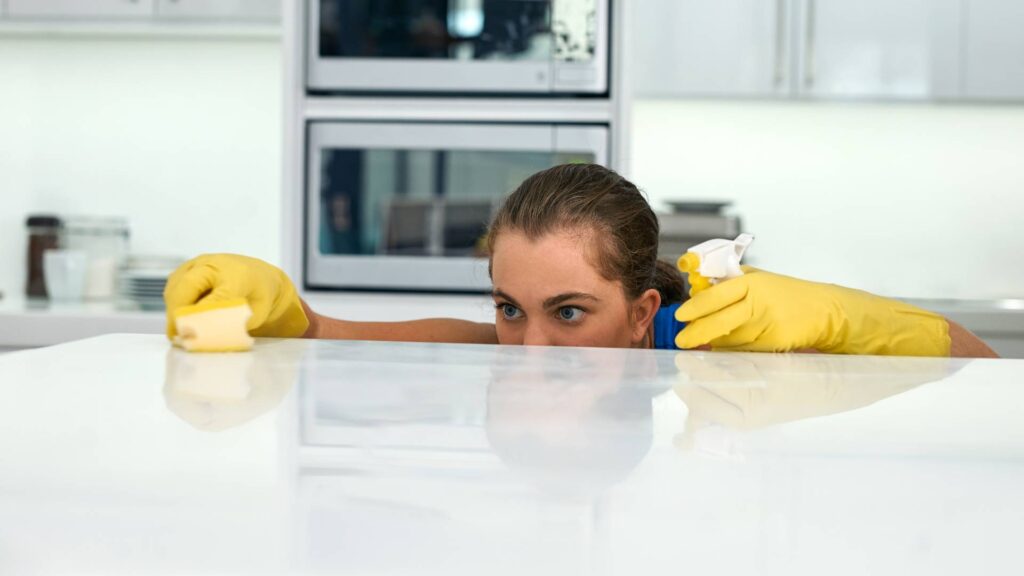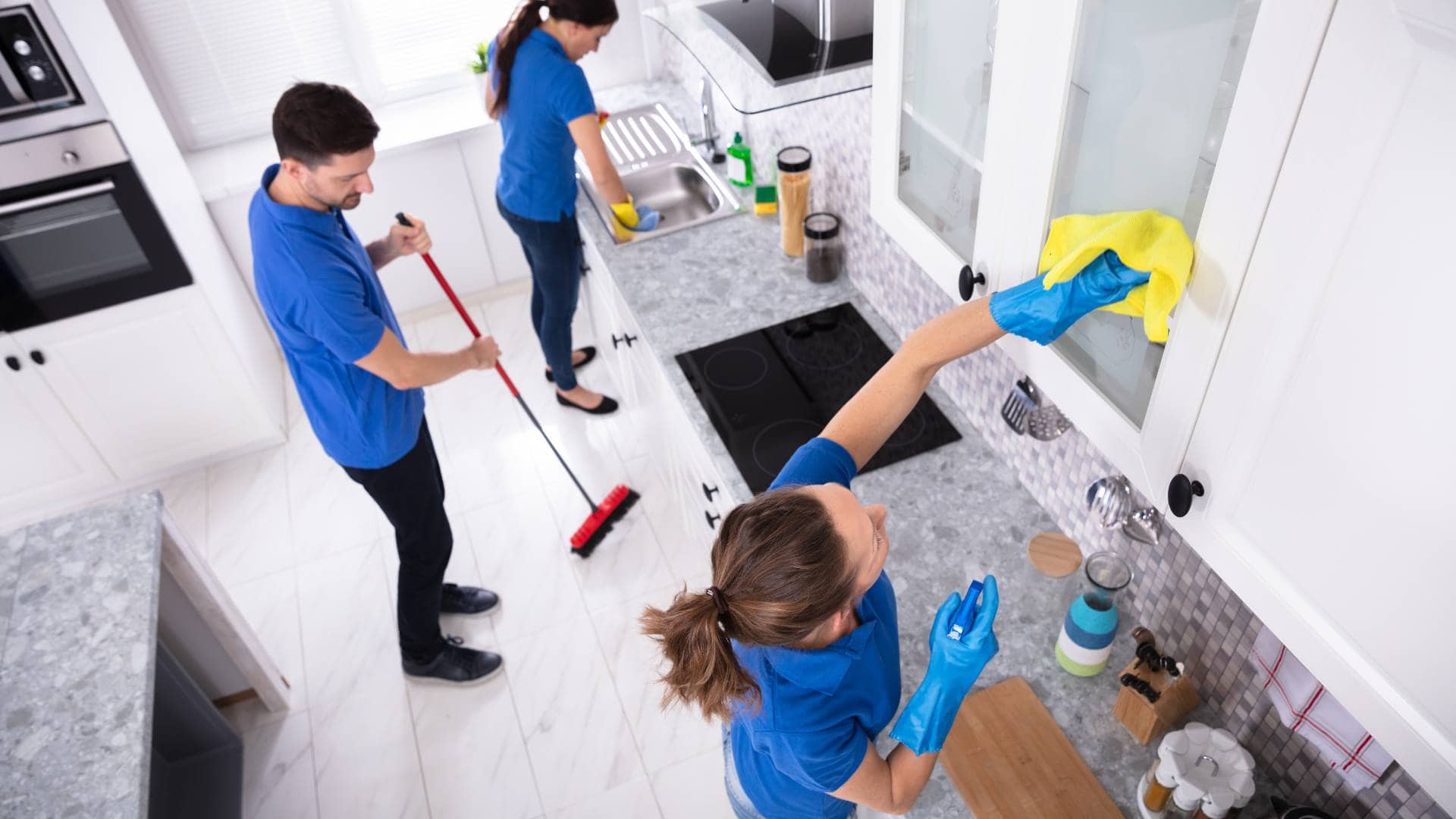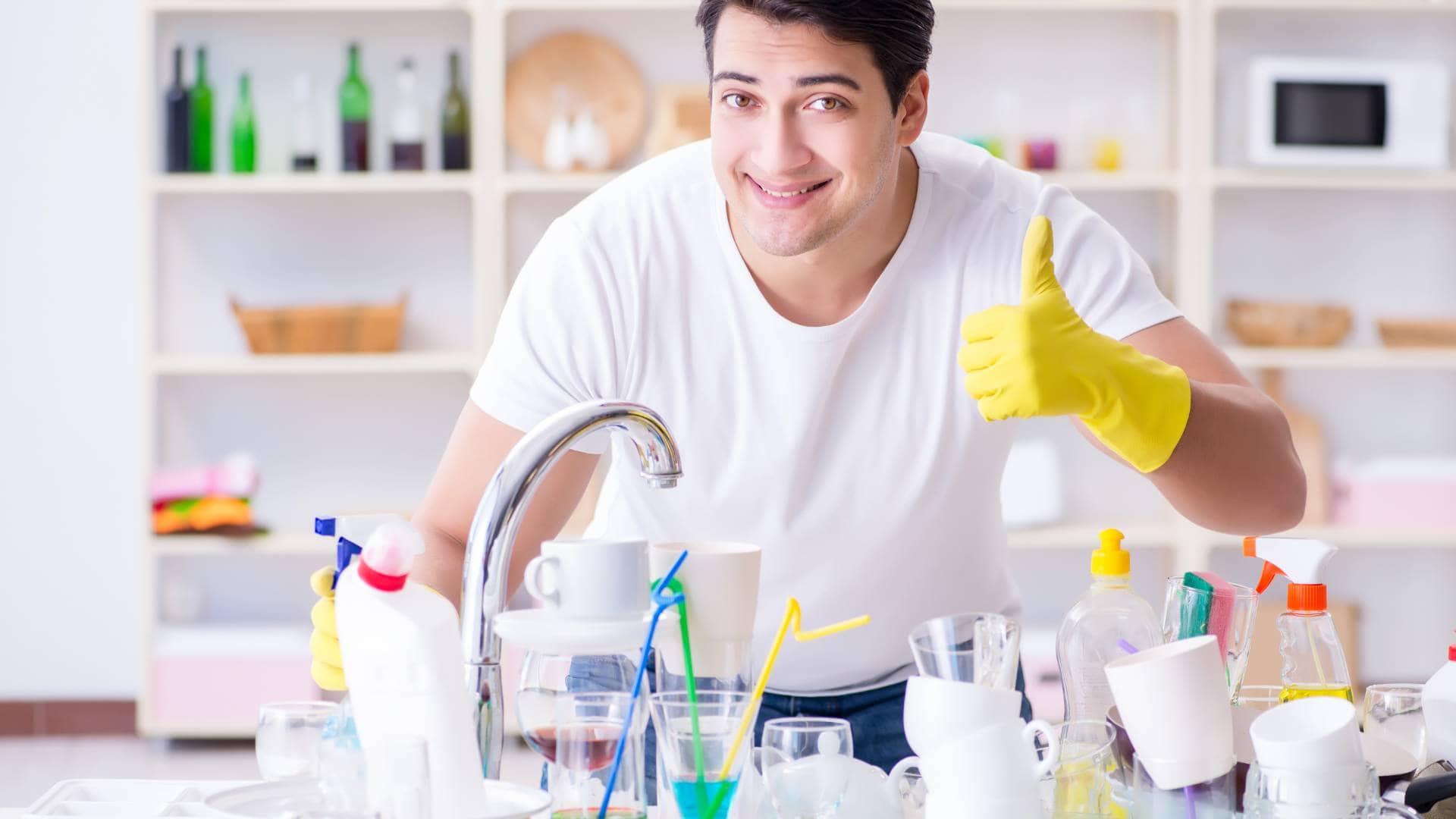Fumigation is a powerful method used to combat pest infestations, offering a solution that reaches where sprays, powders, and baits cannot. Whether you're dealing with termites, bedbugs, or other unwelcome guests, fumigation can provide the clean slate you need.
However, once the tent comes off and the chemicals have dissipated, many homeowners are left wondering about the aftermath—specifically, the necessity of washing everything within their home. This concern is about ensuring the safety and cleanliness of the living environment and understanding what's necessary to mitigate any potential risks associated with chemical residues.
This blog dives deep into the post-fumigation process, examining what needs to be washed and what doesn't and how to clean your home after fumigation effectively. Join us as we provide you with the knowledge and tips to navigate the post-fumigation landscape, ensuring your home is not only pest-free but also safe and welcoming for all who dwell within.
Safety First: Post-Fumigation Concerns
After a fumigation process, homeowners should prioritise safety. Fumigants, while effective against pests, are toxic to humans and require careful handling and awareness of their potential risks. Understanding the safety precautions and protective measures necessary after fumigation is crucial to ensuring the well-being of all occupants.
Key Safety Precautions
- Ventilation: Post-fumigation, it's essential to ventilate the treated area thoroughly. This process involves opening windows and doors and using fans to circulate fresh air, ensuring the removal of any residual fumigant gases.
- Cleaning: After adequate ventilation, a comprehensive house cleaning is recommended. Focus on vacuuming all surfaces, wiping down hard surfaces with a damp cloth, and laundering fabrics to remove any traces of chemicals.
- Health Monitoring: Be vigilant for symptoms of chemical exposure, such as nausea, headaches, or respiratory issues, and seek medical advice if symptoms arise.
- Use of Gas Detection Equipment: After the aeration process, it's advisable to use gas detection equipment to confirm that all fumigants have been removed from the treated area. This step is crucial to ensure the space is safe for re-entry.
- First Aid Training: All individuals involved in the fumigation process should be trained in basic first aid, emphasising techniques for gas poisoning. This training is valuable not only for its practical purpose but also because it emphasises the need for care in all aspects of fumigation.
- Medical Supervision: Regular medical examinations are recommended for those regularly engaged in fumigation work. These exams can check the general health of the operators and reveal conditions that may require personnel to be removed from this type of work either temporarily or permanently.
Understanding Threshold Limits
Knowing the threshold limits for each fumigant is essential. These limits indicate the concentration levels above which it is unsafe for individuals to be exposed and define the maximum periods of exposure. Threshold limits, usually expressed in parts per million by volume in air, serve as guides in controlling health hazards and should not be regarded as absolute boundaries between safe and dangerous concentrations.
Acute And Chronic Hazards
Exposure to toxic gases can result in acute or chronic health effects. Acute effects may arise from a single exposure to high levels of a fumigant, with symptoms appearing within minutes or hours. On the other hand, chronic effects may result from repeated exposure to low levels over time, with symptoms potentially not manifesting until long after exposure.
To Wash Or Not To Wash: Identifying What Needs Cleaning
After fumigation, whether to wash everything in your home is a common concern. While effectively eradicating pests, fumigation leaves homeowners pondering the necessity of cleaning to eliminate chemical residues and ensure a safe environment. Here's a comprehensive guide based on insights from various sources on what needs cleaning post-fumigation.
What Needs Immediate Attention
- Ventilation: First, open all windows and doors to air out the space thoroughly. Proper ventilation helps eliminate the smell and any residual fumigants.
- Exposed Food Items: Discard any food left exposed during the fumigation process. Consuming these can pose health risks.
- Dead Pests: Sweep or vacuum any visible dead pests from the floors, under furniture, and in hard-to-reach areas to prevent attracting new pests.
- Surfaces: Wipe down all surfaces with a damp cloth to remove dust and potential fumigants. For a more thorough cleaning, a mixture of water and vinegar can be used, especially on countertops, doorknobs, cabinets, and drawers.
- Floors and Bathrooms: Mop the floors with warm, soapy water to clean any remaining residues. Remember to clean the bathroom floors and surfaces as well.
- Linens and Beddings: Wash all linens, including sheets and curtains. Vacuum mattresses and pillows before replacing them with clean bedding.
Items That May Not Require Immediate Washing
- Dishes and Utensils: If dishes and utensils were adequately sealed or stored away, they might not need to be washed immediately. However, for peace of mind, washing them before use is advisable.
- Furniture and Upholstery: Furniture and upholstery covered during fumigation may not need immediate cleaning, but vacuuming to remove dust or dead pests is recommended.
- Clothing: Clothes stored in drawers or closets should be safe, but washing them before wearing, especially if exposed, is a good practice.
Professional Cleaning Services
Considering the extensive effort required, hiring a professional cleaning service post-fumigation can be beneficial. Professionals are equipped to handle the deep cleaning needed, ensuring that every corner of your home is safe and clean.
Effective Cleaning Tips Post-Fumigation
After the exterminator has left, ensuring your home returns to a safe and comfortable state involves a thorough cleaning process. Practical cleaning tips are gathered from various expert sources to help you post-fumigation.
Ventilation Is Key
- Open All Windows and Doors: First, air out your home thoroughly. This helps in removing any lingering fumigant odours and residues.
- Tackling the Kitchen
- Inspect and Discard Exposed Foods: Any food items left open during fumigation should be discarded to prevent ingestion of contaminated food.
- Clean Kitchen Surfaces: Wipe down countertops, cabinets, and appliances with a damp cloth, followed by a vinegar and water solution to ensure all surfaces are free from fumigants.
Focus On Fabrics
- Launder Linens and Clothing: Wash all bedding, curtains, and clothes to remove chemical residues. For effective cleaning, consider using warm water and a mild detergent.
- Furniture and Floors
- Vacuum Thoroughly: Vacuum carpets, furniture, and any fabric surfaces to pick up dead pests and any dust that may have settled. Remember to clean under and behind furniture.
- Mop Floors: Use warm, soapy water to mop all floor surfaces, paying extra attention to corners and under furniture.
Bathrooms And Other Areas
- Clean Bathrooms: Ensure that bathroom floors and surfaces are cleaned with appropriate cleaners to remove chemical residues.
- Wipe Down Hard Surfaces: Use a damp cloth to wipe down all hard surfaces throughout the house, including doorknobs, light switches, and railings.
Handling Dead Pests
- Remove Dead Pests: Collect and dispose of visible dead pests around the house. This prevents attracting new pests and eliminates potential health hazards.
- Safety Precautions
- Dispose of Cleaning Materials: After cleaning, dispose of the cloths and sponges used to avoid any risk of chemical exposure in the future.
- Wear Protective Gear: Consider wearing gloves and a mask during cleaning, especially if you're sensitive to dust or the fumigant smell persists.
Post-Cleaning
- Inspect and Replace Air Filters: Check and replace HVAC air filters if necessary to ensure clean air circulation throughout your home.
- Monitor for Pests: After the treatment, look for any signs of pest activity. If pests are observed, contact your pest control service for further advice.
Special Considerations For Sensitive Areas
After fumigation, special considerations for sensitive areas are crucial to ensure occupants' safety and well-being and prevent potential health risks. Fumigants, while effective against pests, are toxic to humans and animals, necessitating careful post-treatment handling, especially in areas where people spend a lot of time or where food is prepared and stored. Here are key points to consider:
- Ventilation is Paramount: After fumigation, the first and most critical step is to ventilate the treated area thoroughly. This involves opening windows and doors and using fans to circulate fresh air, ensuring the removal of any residual fumigant gases. Proper ventilation reduces the risk of exposure to toxic chemicals.
- Cleaning with Care: Surfaces in sensitive areas, especially kitchens and dining areas, should be cleaned meticulously. Use a damp cloth to wipe down all surfaces, including countertops, tables, appliances, and cabinets. This helps remove any traces of fumigants that may have settled on surfaces during the treatment.
- Handling Food Items Safely: Any food items left in the area during fumigation should be handled cautiously. It is advisable to discard open food packages or containers that were not adequately sealed. For added safety, washing fruits and vegetables before consumption is recommended, even if stored in refrigerators or sealed containers.
- Personal Protective Equipment (PPE): When cleaning and ventilating sensitive areas, wearing appropriate PPE, such as gloves and masks, can provide an additional layer of protection against potential chemical exposure.
- Professional Clearance: Obtaining professional clearance from the pest control service is essential before using sensitive areas post-fumigation. Based on the dissipation of fumigants and air quality tests, they can confirm that the area is safe for re-entry and use.
Conclusion
Fumigation is a powerful method used to combat pest infestations. Still, after the tent comes off and the chemicals have dissipated, many homeowners wonder if they need to wash everything within their home. Safety should be the top priority for homeowners after fumigation, as fumigants are toxic to humans and require careful handling and awareness of potential risks. Essential safety precautions include ventilation, cleaning, health monitoring, using gas detection equipment, first aid training, and medical supervision.
Understanding threshold limits for each fumigant is essential for controlling health hazards and defining the maximum periods of exposure. Acute and chronic health effects can result from exposure to toxic gases, with acute effects arising from a single exposure to high levels and chronic effects from repeated exposure to low levels over time.
After fumigation, homeowners should consider what needs cleaning to eliminate chemical residues and ensure a safe environment. Immediate attention includes ventilation, discarding exposed food items, sweeping or vacuuming dead pests, wiping down surfaces with damp cloths, mopping floors and bathrooms, and washing linens and bedding.
Dishes and utensils, furniture and upholstery, and clothing stored in drawers or closets may not require immediate washing. However, following these guidelines is important to ensure a safe and clean living environment after fumigation.
Hiring a professional cleaning service is beneficial post-fumigation as they can handle the deep cleaning needed to ensure your home is safe and clean. Practical cleaning tips include ventilation, kitchen tackling, washing fabrics, vacuuming furniture and floors, cleaning bathrooms, and wiping down hard surfaces. Dead pests should be removed to prevent attracting new pests and eliminate potential health hazards. Safety precautions include:
- I am disposing of cleaning materials.
- She was wearing protective gear.
- She is inspecting and replacing air filters.
- We are monitoring for pest activity.
Special considerations for sensitive areas are crucial to ensure safety and prevent potential health risks. Ventilation is paramount, and surfaces should be cleaned carefully, especially in kitchens and dining areas. Food items should be handled cautiously, and personal protective equipment (PPE) should be worn during cleaning. Before using sensitive areas post-fumigation, professional clearance from pest control services are essential, as they can confirm the area's safety based on fumigant dissipation and air quality tests.
Hiring a professional cleaning service post-fumigation is essential for a safe and comfortable home. Proper ventilation, careful cleaning, and proper handling of sensitive areas are essential for preventing potential health risks and ensuring the safety of occupants.
Content Summary
- Fumigation is a potent method for eradicating pest infestations, reaching areas other treatments can't.
- It's effective against termites, bedbugs, and other pests, providing a comprehensive solution.
- Post-fumigation, homeowners often wonder about the necessity of washing everything in their homes.
- Concerns include safety, cleanliness, and mitigating risks associated with chemical residues.
- This blog explores what needs washing after fumigation and how to clean effectively.
- Safety is the top priority after fumigation due to the toxic nature of fumigants.
- Understanding safety precautions and protective measures is crucial for occupant well-being.
- Ventilation is essential post-fumigation to remove residual fumigant gases.
- Comprehensive cleaning is recommended to eliminate any chemical traces.
- Be vigilant for symptoms of chemical exposure and seek medical advice if needed.
- Using gas detection equipment ensures the area is safe for re-entry.
- First aid training and medical supervision are advised for those involved in fumigation.
- Knowing the threshold limits for each fumigant helps control health hazards.
- Exposure to fumigants can result in acute or chronic health effects.
- The necessity of washing items post-fumigation is a common concern among homeowners.
- Ventilating the space thoroughly is the first step in the post-fumigation cleaning process.
- Exposed food items should be discarded to prevent health risks.
- Dead pests should be swept or vacuumed to prevent attracting new pests.
- Surfaces should be wiped down with a damp cloth and a vinegar-water solution.
- Floors and bathrooms require mopping with warm, soapy water.
- Linens and bedding should be washed to remove any chemical residues.
- Dishes and utensils may not need immediate washing if adequately sealed.
- Furniture and upholstery covered during fumigation may only need vacuuming.
- Clothing stored in drawers or closets should be safe, but washing it before wearing it is advisable.
- Hiring a professional cleaning service post-fumigation can ensure thorough cleaning.
- Practical cleaning tips include ventilating the home and tackling the kitchen first.
- Inspecting and discarding exposed foods is crucial for safety.
- Laundering linens and clothing helps remove chemical residues.
- Vacuuming and mopping floors and furniture ensures a clean environment.
- Cleaning bathrooms and wiping down hard surfaces are essential steps.
- Removing dead pests and disposing of cleaning materials prevent health hazards.
- Wearing protective gear during cleaning protects against potential chemical exposure.
- Post-cleaning activities include inspecting and replacing air filters.
- Monitoring for pests after treatment is essential for ongoing pest control.
- Special considerations for sensitive areas post-fumigation ensure safety and well-being.
- Ventilating treated areas thoroughly is paramount for removing toxic chemicals.
- Cleaning sensitive areas, especially kitchens and dining areas, requires meticulous attention.
- Handling food items safely post-fumigation prevents contamination.
- Wearing personal protective equipment during cleaning offers additional protection.
- Obtaining professional clearance before using sensitive areas ensures safety.
- The blog provides knowledge and tips for navigating the post-fumigation landscape.
- The goal is to ensure that a home is pest-free but also safe and welcoming.
- The importance of safety precautions and protective measures post-fumigation is emphasised.
- Understanding the threshold limits for fumigants helps control exposure risks.
- The necessity of washing items post-fumigation is explored in detail.
- Effective cleaning tips post-fumigation guide homeowners through the process.
- Special considerations for sensitive areas post-fumigation highlight safety measures.
- The blog aims to ensure homes are safe and clean after fumigation.
- Homeowners are provided with guidance on cleaning and safety post-fumigation.
- The post-fumigation process involves ventilation, cleaning, and monitoring for safety.
Frequently Asked Questions
Yes, it's advisable to wash all clothing in the house during fumigation, even if it was stored in drawers or closets, to ensure any potential chemical residues are removed.
If your dishes and kitchen utensils were adequately sealed or stored away during fumigation, they might not need immediate washing. However, for peace of mind, washing them before use is recommended.
All bedding, including sheets, blankets, and pillowcases, should be laundered after fumigation to remove any chemical residues that may have settled on them.
Furniture and upholstery covered during fumigation may not need immediate deep cleaning, but vacuuming to remove dust or dead pests is recommended. If possible, consider steam cleaning upholstered furniture.
Electronics exposed during fumigation should be wiped down with a soft, slightly damp cloth. Avoid using harsh chemicals or excessive moisture.



